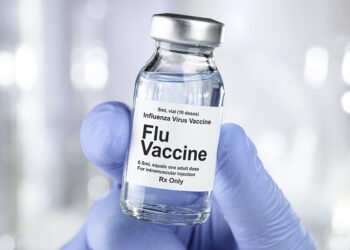UNICEF, with the support of the Clarios Foundation, has provided the National Center of Disease Control and Public Health (NCDC) of Georgia with advanced laboratory equipment to detect sources of toxic metals, and has completed the building of lab capacity in the country for the precise analysis of lead and other elements in various specimens (e.g. blood, biological fluids, paint, etc.). Georgia will now have a cutting-edge laboratory that will also allow for advanced research related to environmental health issues.
The building of laboratory capacity is part of the Georgian government’s response plan to prevent lead exposure and to protect children from the related toxic effects. UNICEF supports the government in addressing elevated lead levels in children through diagnosing the problem by measuring lead levels, investigating the sources and pathways of lead contamination, and designing a national response plan to reduce or eliminate lead exposure. This final step included building laboratory capacity for Georgia.
The partnership between UNICEF and the Clarios Foundation, which also involves Pure Earth, is part of the public-private global initiative Protecting Every Child’s Potential, which aims to prevent children’s exposure to lead with proven solutions.
“Toxic metals can cause irreparable harm to the brain. It is particularly dangerous for young children, leading to lifelong neurological, cognitive, and physical impairment,” said Dr. Ghassan Khalil, UNICEF Representative in Georgia. “UNICEF has been closely working with the government to address elevated lead levels in children’s blood by building laboratory capacity and making it possible to test toxic metals in blood, and other specimens, locally. With support from the Clarios Foundation, the laboratory capacity has been increased to its maximum.”
The equipment delivered throughout the last year includes a Triple Quadrupole Inductively Coupled Plasma Mass Spectrometer (ICP MS), a Gas Chromatograph (GC), and a Liquid Chromatograph (LC). Also, with the support of different donors including USAID and the Estonian Government, UNICEF delivered to the NCDC an Atomic Absorption Spectrometer, used for determining concentrations of different chemical elements in various specimens, as well as four XRF analyzers, which are special portable handheld devices that can test for toxic metal content in different types of specimens. The equipment is unique to the entire region and will significantly improve the environmental health laboratory capacities in the country.
Presently, intensive re-training of employees, development and implementation of laboratory research methods and standards is in progress in the chemical risk factors research laboratory. The next stage envisions identification of heavy methods including lead in human blood specimens using the Inductively Coupled Plasma Mass Spectrometer (ICP MS), which is the “golden standard” recognized by WHO, while work with XRF analyzers is already in progress.
Lab personnel have been recruited, and they will be trained in the operation and maintenance of the procured lab equipment before the end of 2021. Trainings will be conducted by internationally recognized experts and instructors in the field. The trainings will be followed by the inclusion of the environmental health laboratory of the NCDC into the United States Centers for Disease Control Lead and Multi-Element Proficiency (LAMP) program, providing continuous quality assurance of NCDC lab performance free of charge.
BY Team GT














